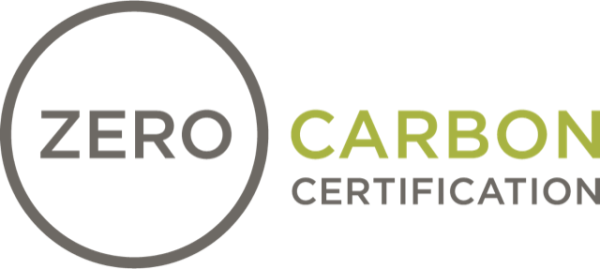Calculation Parameters
Embodied Carbon Baseline Scope
Embodied carbon baselines for primary materials must include the carbon emissions associated with a material’s raw material extraction, manufacturing, transportation, and installation. These are life cycle stages A1–A5, as defined by standard EN 15978 and as shown in Figure ZC-1. Project teams must use an approved LCA tool to calculate the aggregated carbon-emissions impacts of the project materials within each stage.

Embodied Carbon Reductions vs. a Baseline
Reductions in embodied carbon are determined based on a quantitative comparison to the embodied carbon baseline value. The only differences in the project’s final embodied carbon value and the baseline must be reductions the project team achieved.
Reduction baseline cases must reflect the following:
- A building design that is identical to the proposed design with the exception of the claimed reduction measures.
- The same project scope and function; a building of equivalent area, use type(s), and energy performance.
- Materials and design parameters based on common industry practice for the building type, scale, and region, and which comply with all of the same applicable land use and building codes as the proposed design.
Project teams may use material type and quantity assumptions from either recently built project examples or a modeled baseline building with comparable properties to support these assumptions.
Building or Material Reuse, Reduction
The reuse of buildings is the most effective means to reduce the overall embodied carbon of a project. Therefore, project teams that reuse an existing building may count the reuse of any in-situ primary materials against the required reduction percentage. The impacts of any new materials added to the reused building must be calculated and offset.
Similarly, the use of salvaged or recycled primary materials may contribute to meeting the reduction requirement. This reduction can be quantified by removing the embodied carbon impacts of the materials that would have otherwise been sourced new. However, projects must still claim and offset all embodied carbon associated with the refurbishment, transport, and installation (i.e., life cycle stages A3–A5, see Figure ZC-1) of the salvaged or reused materials.
Any reductions to the embodied carbon of materials are reflected in the Embodied Carbon Offset Calculation.
Biogenic Carbon, Products and Practices
(Section previously titled Carbon Sequestering Products and Practices)
Any product claim of sequestration must be based on Product Category Rules (PCRs) in accordance with ISO 14025 and ISO 21930, including any eligibility and stage-specific requirements for carbon removal.
Even when reporting up-front (A1–A5) emissions only, the product’s net carbon-sequestering benefits (accounting for biogenic carbon release stages B1–C4 in accordance with ISO 21930) must be used. Products carrying a mixed-credit sustainability certification must multiply the product’s embodied carbon result by the product’s certified percentage. The results of life cycle assessments and analyses must be reported with and without biogenic carbon sequestration included.
Intentional Actions
All embodied carbon reductions must be associated with intentional actions taken by the project team during the design and construction phases of the project. Project teams should provide comparative embodied carbon evaluations or carbon-based specifications for material or product alternatives to document this intention.
Primary Materials
The foundation, structure and enclosure of a building comprise its primary materials; an example scope is shown below in table ZC-2. Project teams should identify an equivalent list of materials that is applicable to their project.
Table ZC-2 Primary Materials Scope
Reduction Types
Eligible embodied carbon strategies can be classified into one of three categories: a material quantity reduction, a material alternative, or a product alternative. Example strategies to reduce embodied carbon within these categories may include, but are not limited to, those listed in Table ZC-3 below:
Table ZC-3 Embodied Carbon Reduction Categories and Example Strategies
The beneficial impact of each claimed embodied carbon reduction should be described and calculated separately, even if one material or assembly represents multiple reduction strategies.
Project teams that wish to claim alternative reduction types may submit a Request for Ruling for preapproval.





